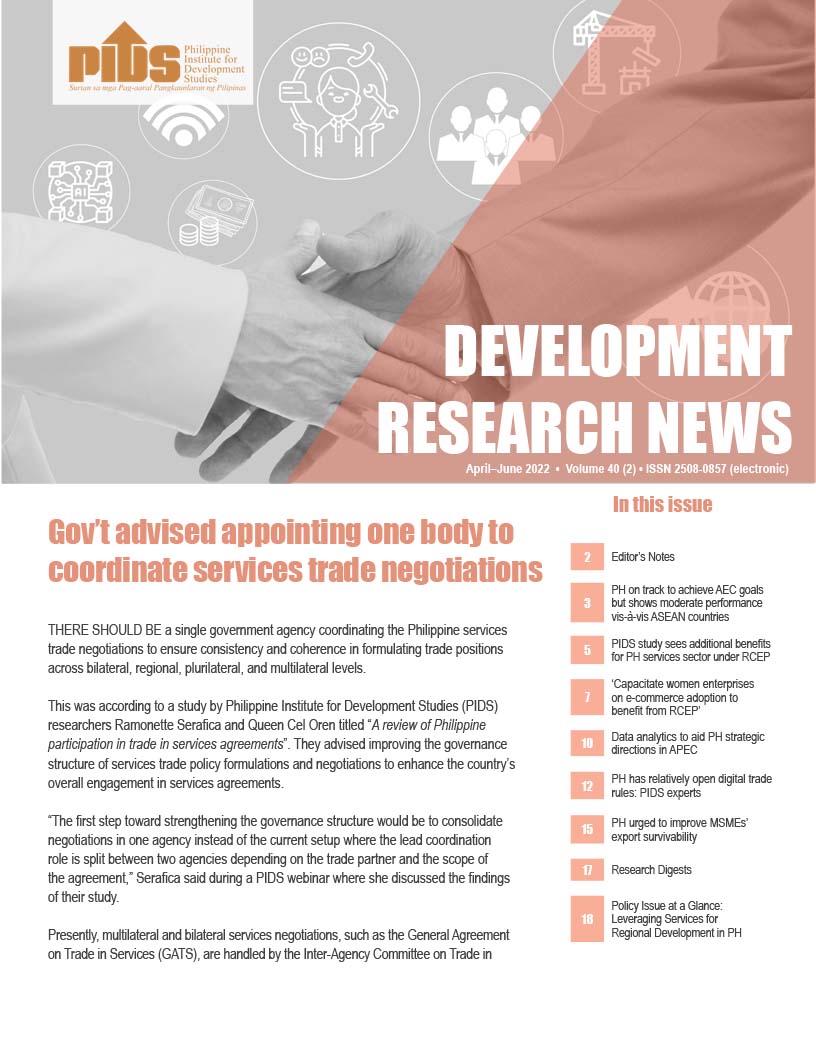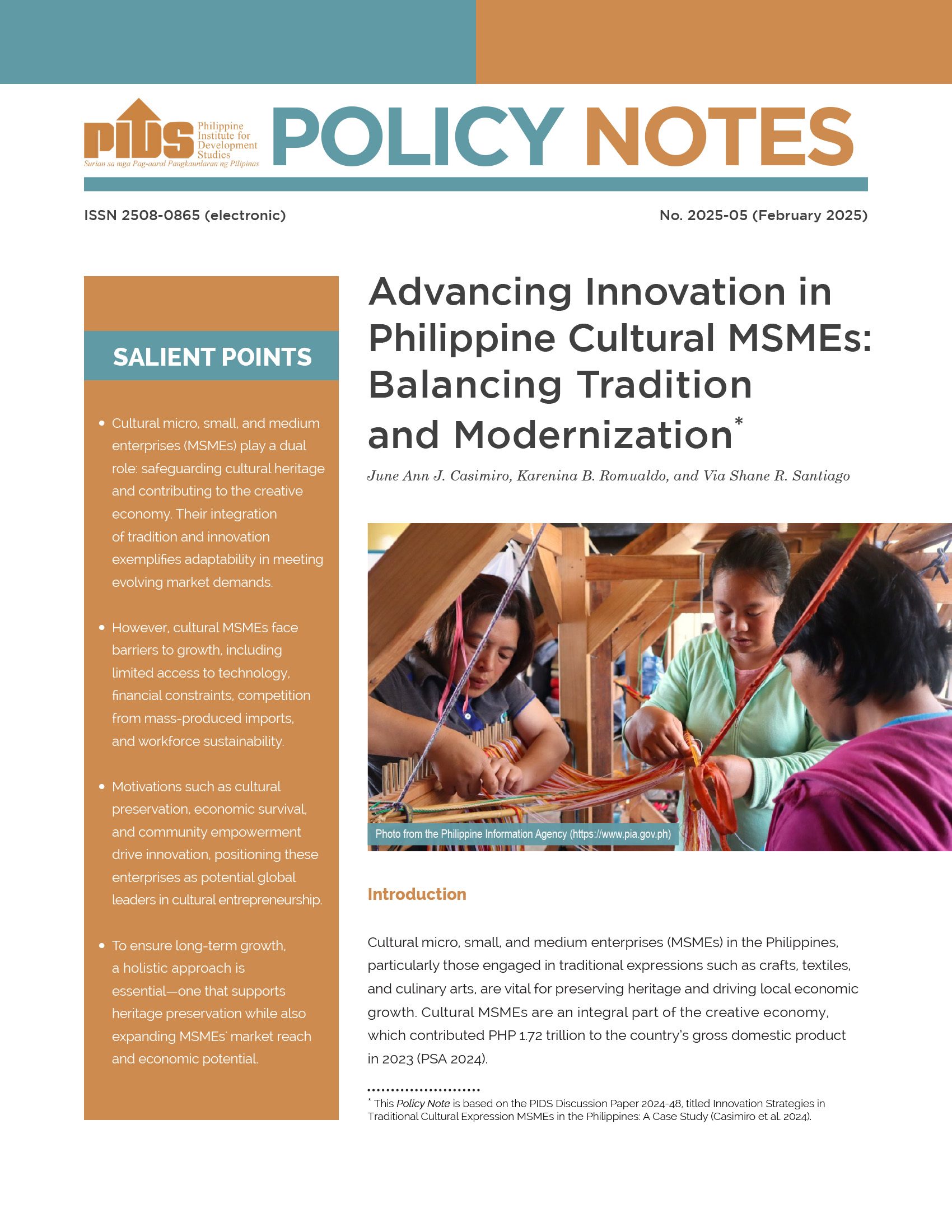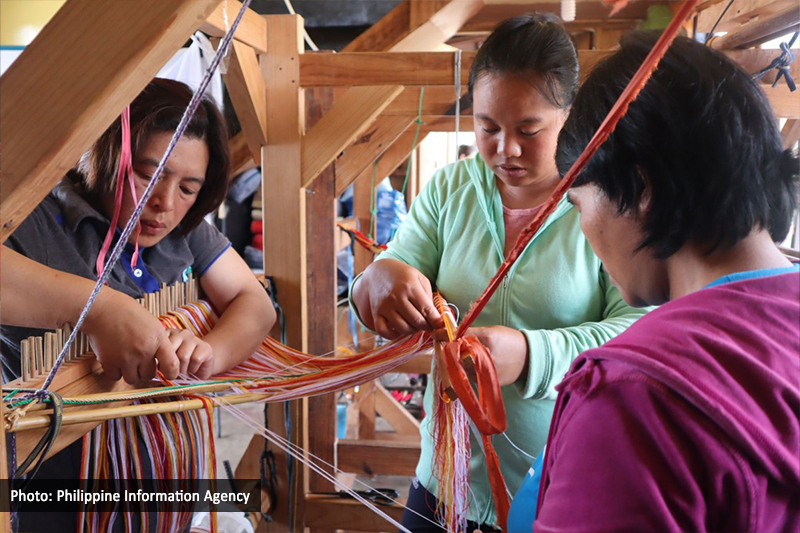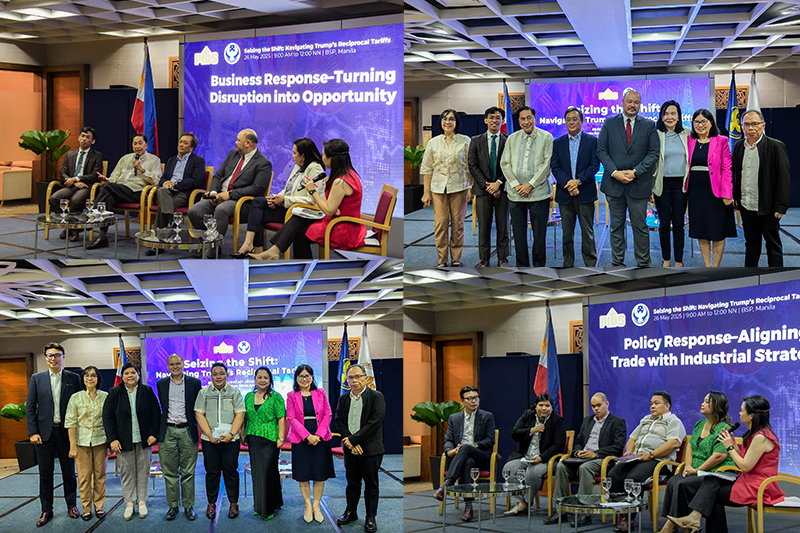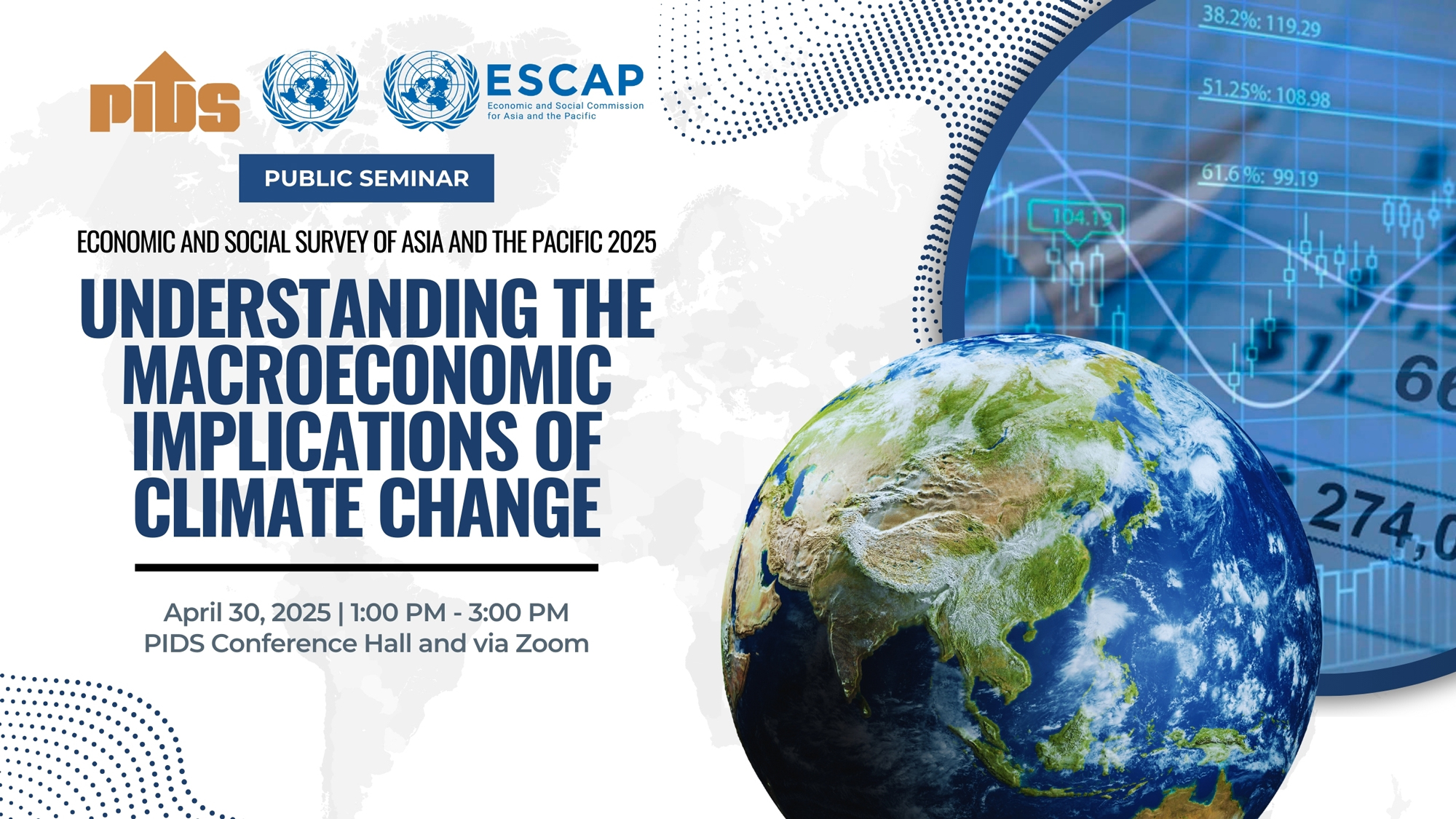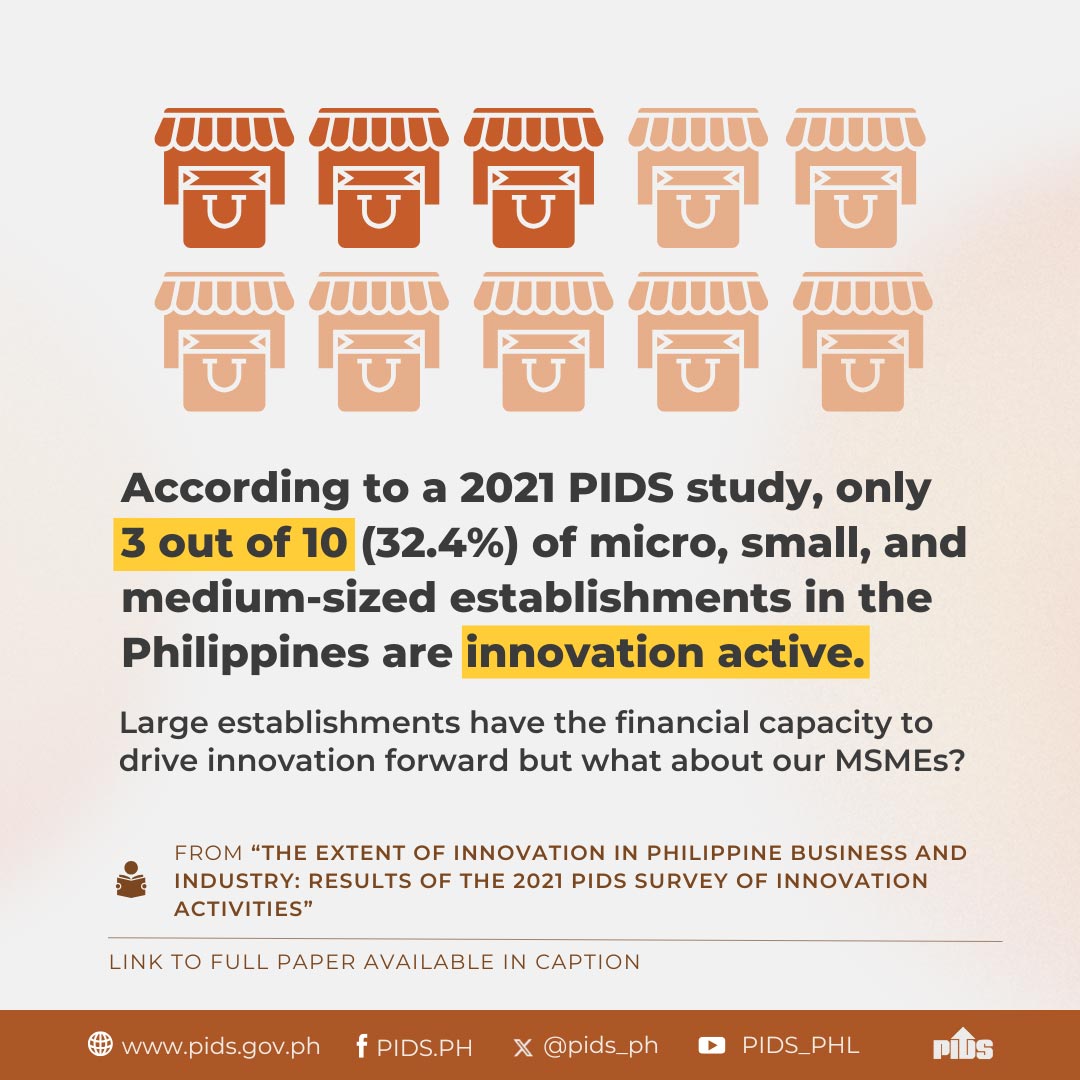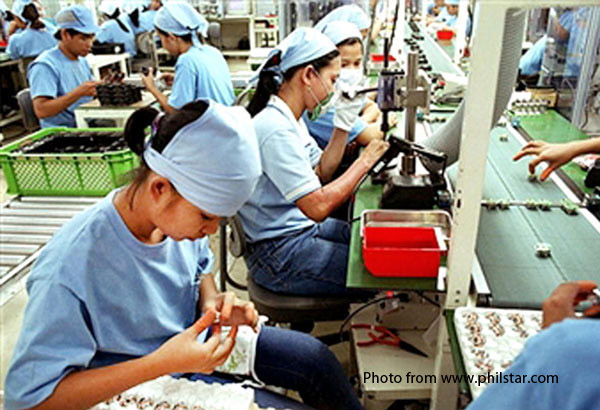
The government’s shift to a new industrial policy has contributed to the continuous economic growth of the country, according to a study published by state think tank Philippine Institute for Development Studies (PIDS).
Authors Maureen Ane Rosellon and Erlinda Medalla, PIDS research associate and senior research fellow, respectively, said the Philippines has maintained its 6-7 percent growth rate from 2012 to 2016, making it one of the fastest growing economies in Asia and in the Association of Southeast Asian Nations Plus Three composed of China, Japan, and South Korea.
The authors said this is consistent with the 2017 Global Competitiveness Report, which indicates the Philippines’ good performance in several areas such as macroeconomic environment, inflation management, government debt and budget balance, soundness of banks, regulation of securities exchanges, as well as on primary and higher education. Based on the report, the country ranks 56th out of 137 economies all over the world.
The authors also observed growth in the areas of cash remittances (mostly from the United States), employment (with services sector having the most number of workers employed), and labor productivity (with the industry sector registering the highest).
Furthermore, the Asian Development Bank, the International Monetary Fund, and the World Bank have all projected the Philippines’ continued robust growth from 2017 to 2019.
“While many factors contributed to these positive developments (including strong macroeconomic fundamentals), one cannot discount the contribution of the New Industrial Policy (NIP) to the recent success of the Philippines,” the authors noted.
Evolution
The NIP can be traced back to the Manufacturing Resurgence Program—a program that started in 2014 to “rebuild the existing capacity of industries, strengthen new ones, and maintain the competitiveness of industries with comparative advantage”. The MRP looked at the possible contribution of agriculture-based manufacturing industries to the manufacturing sector.
Seeing the need to integrate industry and manufacturing with agriculture and services, the government developed the Comprehensive National Industrial Strategy (CNIS), which aimed to address issues on supply chain gaps, infrastructure, logistics, governance, and regulations cutting across the agriculture, manufacturing, and services industries.
Last year, the government upgraded the CNIS to the Innovation-led Industrial Strategy (i3s) to underscore the importance of innovation in view of the fourth industrial revolution (Industry 4.0), but retaining the former’s core framework.
“The fourth industrial revolution will pose new challenges and opportunities. In order to take part and survive in this major shift, it is critical for the Philippines to build an innovative ecosystem,” the authors explained.
Furthermore, the authors underscored the importance of “developing human capital with skills in science, technology, engineering, mathematics, and employing innovation-led technologies to improve productivity”.
Citing Trade and Industry Secretary Ramon Lopez, the authors pointed out that entrepreneurship, which is part of the i3s framework, will be helpful in producing a breed of Filipino entrepreneurs that will espouse “idea-based, demand-oriented, and research-driven innovation”.
To make priority industries under the i3s competitive and productive, the authors suggested addressing “supply chain gaps, human resource development and skills training, small and micro enterprise development, innovation and upgrading, intense investment promotion, and addressing horizontal issues (e.g., infrastructure, logistics, regulatory processes)”.
With manufacturing growth surpassing the services sector’s growth in the past three years, the authors said this is a “testament to the impact of the new industrial policy on the economy, especially the manufacturing sector”, and urged the government to continue implementing the strategic actions in the new industrial policy. ###
This press release is based on the PIDS discussion paper titled “Macroeconomic Overview of the Philippines and the New Industrial Policy”.
Authors Maureen Ane Rosellon and Erlinda Medalla, PIDS research associate and senior research fellow, respectively, said the Philippines has maintained its 6-7 percent growth rate from 2012 to 2016, making it one of the fastest growing economies in Asia and in the Association of Southeast Asian Nations Plus Three composed of China, Japan, and South Korea.
The authors said this is consistent with the 2017 Global Competitiveness Report, which indicates the Philippines’ good performance in several areas such as macroeconomic environment, inflation management, government debt and budget balance, soundness of banks, regulation of securities exchanges, as well as on primary and higher education. Based on the report, the country ranks 56th out of 137 economies all over the world.
The authors also observed growth in the areas of cash remittances (mostly from the United States), employment (with services sector having the most number of workers employed), and labor productivity (with the industry sector registering the highest).
Furthermore, the Asian Development Bank, the International Monetary Fund, and the World Bank have all projected the Philippines’ continued robust growth from 2017 to 2019.
“While many factors contributed to these positive developments (including strong macroeconomic fundamentals), one cannot discount the contribution of the New Industrial Policy (NIP) to the recent success of the Philippines,” the authors noted.
Evolution
The NIP can be traced back to the Manufacturing Resurgence Program—a program that started in 2014 to “rebuild the existing capacity of industries, strengthen new ones, and maintain the competitiveness of industries with comparative advantage”. The MRP looked at the possible contribution of agriculture-based manufacturing industries to the manufacturing sector.
Seeing the need to integrate industry and manufacturing with agriculture and services, the government developed the Comprehensive National Industrial Strategy (CNIS), which aimed to address issues on supply chain gaps, infrastructure, logistics, governance, and regulations cutting across the agriculture, manufacturing, and services industries.
Last year, the government upgraded the CNIS to the Innovation-led Industrial Strategy (i3s) to underscore the importance of innovation in view of the fourth industrial revolution (Industry 4.0), but retaining the former’s core framework.
“The fourth industrial revolution will pose new challenges and opportunities. In order to take part and survive in this major shift, it is critical for the Philippines to build an innovative ecosystem,” the authors explained.
Furthermore, the authors underscored the importance of “developing human capital with skills in science, technology, engineering, mathematics, and employing innovation-led technologies to improve productivity”.
Citing Trade and Industry Secretary Ramon Lopez, the authors pointed out that entrepreneurship, which is part of the i3s framework, will be helpful in producing a breed of Filipino entrepreneurs that will espouse “idea-based, demand-oriented, and research-driven innovation”.
To make priority industries under the i3s competitive and productive, the authors suggested addressing “supply chain gaps, human resource development and skills training, small and micro enterprise development, innovation and upgrading, intense investment promotion, and addressing horizontal issues (e.g., infrastructure, logistics, regulatory processes)”.
With manufacturing growth surpassing the services sector’s growth in the past three years, the authors said this is a “testament to the impact of the new industrial policy on the economy, especially the manufacturing sector”, and urged the government to continue implementing the strategic actions in the new industrial policy. ###
This press release is based on the PIDS discussion paper titled “Macroeconomic Overview of the Philippines and the New Industrial Policy”.

